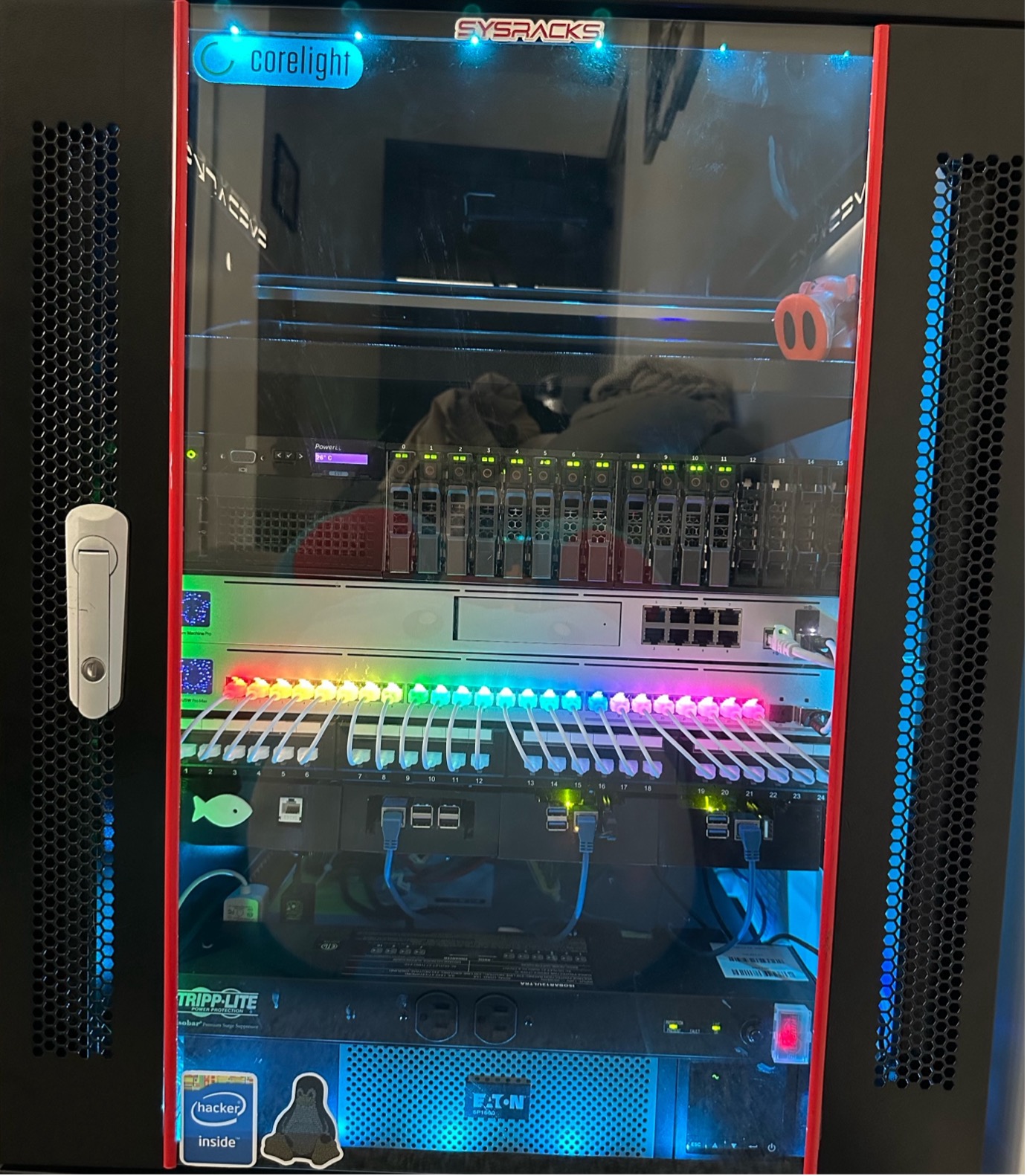Core Infrastructure
My homelab is a self-built infrastructure environment focused on virtualization, container orchestration, monitoring, security, and automation. I run two Proxmox servers—one dedicated to GPU-intensive AI workloads, and a primary hypervisor that handles core infrastructure and applications.
Within the primary Proxmox node:
Core Infrastructure VM:
Runs Traefik (reverse proxy with dynamic routing), Authentik (identity provider for SSO), and CrowdSec (behavior-based intrusion prevention).
Container Host VM:
Uses Portainer to manage 50+ Docker containers, including:
- Vaultwarden (lightweight Bitwarden-compatible password manager)
- Gitea (self-hosted Git service)
- Cloudflare Tunnel (secure remote access without port forwarding)
- Nessus (vulnerability scanner)
- Uptime Kuma (status page and uptime monitoring)
- Homepage (dashboard to organize services)
- and many more tools for networking, automation, media, and DevOps.
Monitoring VM:
Combines Zabbix, Prometheus, and Grafana for full-stack metrics, alerting, and visualization.
Service-Specific VMs:
- Mastodon (federated social network)
- Bluesky PDS (personal data server for the AT Protocol)
- Nextcloud (file sync, calendar, contacts, and more. Alternative to the Google Workspace.)
- Minecraft (dedicated game server)
- Web Hosting (this site and others)
- Home Assistant (smart home automation)
- plus others for development, testing, and one-off services
Outside the virtual environment:
- TrueNAS Core NAS for storage, backups, and SMB/NFS shares
- 3D Printing Server: Runs OctoPrint with multiple USB cameras for remote print monitoring and control
- Pi-hole for DNS and ad/tracker blocking
- Tailscale and Twingate for secure, identity-based remote access
- Corelight for deep network visibility and traffic analysis
